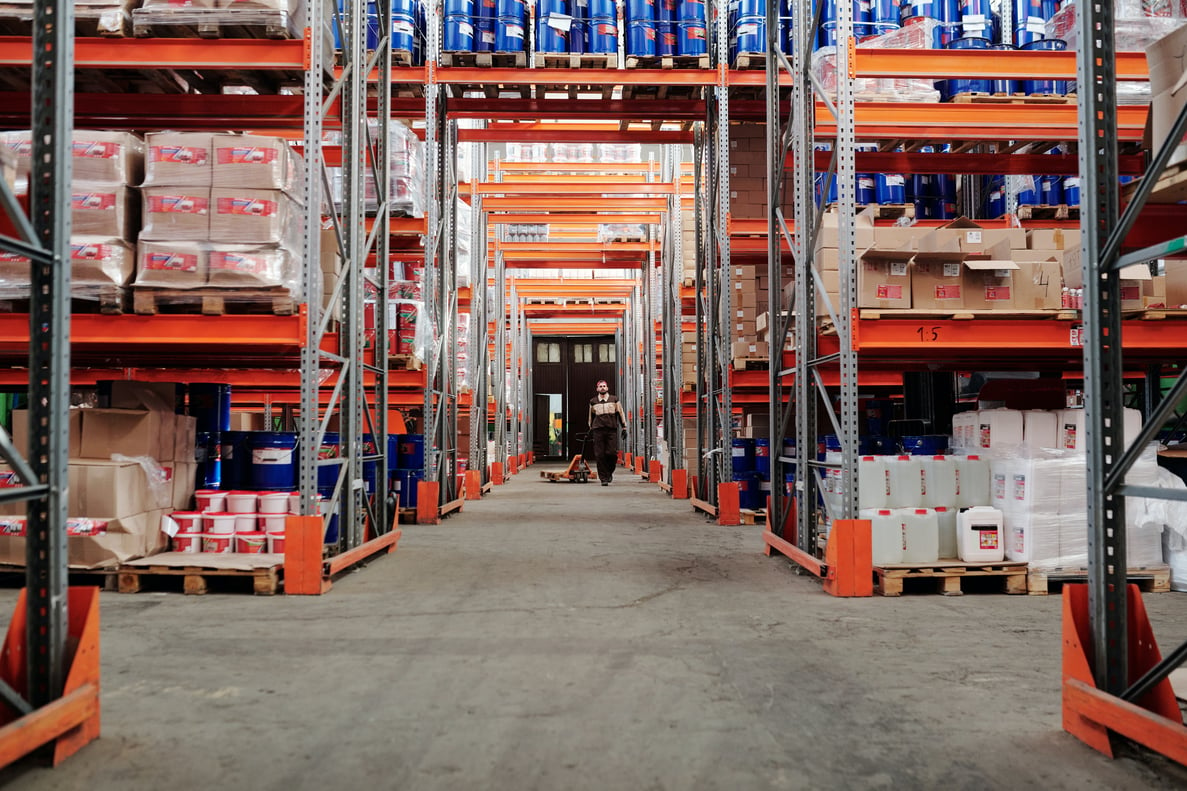For eCommerce brands of any size, an array of challenges exist at the intersection of inventory, supply chain management, and warehouse fulfillment, and even the slightest disorganization has the potential to devolve into chaos. To counter this, the establishment and maintenance of a warehouse inventory control system is mission critical.
There is no uniform guide to achieving it, however. The processes used by a frozen food purveyor will be vastly different than those of a jewelry designer, and neither will resemble the operations of a furniture store. Yet, despite these differences, all need tight control over their inventory to be successful.
At SkuNexus, control is at the center of the management software solutions we design. Helping eCommerce businesses take, and keep, control over all their backend operations is a core element of what we do.
Here, we present 7 crucial tools any merchant can use to gain and maintain decisive warehouse inventory control.

Optimize Your Warehouse Layout
Preferably, a merchant has a blank slate and can draw up the inventory warehouse schematic before product #1 has arrived at receiving, but in the likely event of an existing floor plan, any positive changes can help foster improved control.
A holistic approach is necessary here - how the warehouse floor is configured needs to be determined by the totality of your processes. To that end, you must assess every single warehouse procedure, piece of equipment, the number of employees, et al. This critical analysis will yield insights and give clarity to the issues that need to be fixed.
By optimizing flow (of goods, employees, machinery), a merchant reduces traffic jams, increases worker productivity, and lowers the likelihood of accidents and human error. All of this leads to more organization and better control at every stage of warehouse operations.
Eliminate Manual Inputs via Automation
In the past decade or so, automation has become much more affordable, with many businesses taking advantage of this cost-effective technology to improve their operations. Automation can be used to reduce labor, space, and time costs, however, businesses must also consider the payback when considering automation, as well as how to best match the right automation technology to their challenges.
The first step in the automation process is to examine the flow of products through the warehouse, traffic patterns, and the overall layout of the facility. Businesses should then standardize their processes, reducing potential variation and thereby saving time and money and reducing errors. Measure each activity in the warehouse to establish a baseline where improvements can be made, and then determine how to make those improvements and identify a target metric to measure implemented improvements.
When making the first upgrade decision, businesses should think ahead and pick an automation solution that is scalable and can be easily integrated with future solutions. It is essential to determine the right automation technology to meet the specific challenges of the operation, whether its goals are labor savings, space savings, throughput and flexibility gains, or reduced maintenance and supervision. Applying different automation technologies, either individually or in combination, can be beneficial in alleviating a range of different challenges.

Build Well-Defined Processes Around the Automated Systems
Technology is an invaluable asset, but it is not a replacement for well-defined processes. It can assist with automation, but it cannot make decisions on its own. Designing a process that takes into account the necessary exceptions and changes to business rules is critical to achieving maximum ROI. Without involving the analytical implementation teams and ensuring cultural buy-in, the process can become a burden and take longer to implement than a traditional approach.
It is important to assess where tasks should be performed to achieve the most cost-effective and efficient result. Upstream suppliers may be able to perform certain tasks more cost-effectively than at the warehouse, while a marginal increase in labor costs at the warehouse may result in significant labor savings downstream. As compliance requirements become more stringent, traceability throughout the supply chain becomes increasingly important. Investing in a process that makes traceability easier and more manageable can save time and frustration.
Establish Clear Workflows & Barcode Scanning
While each business will have its own way of doing things, the processes involved in effective inventory management are standardized. By creating well-defined workflows for each one, you can implement procedures to ensure accuracy and regimentation throughout your operations.
- Receiving: As the first warehouse process, any errors here will only grow and spread as products make their way through the warehouse. To establish initial inventory control, the warehouse must verify that it has received the correct products, undamaged, and in the right quantity. The warehouse barcode scanner will make its first of many appearances here as received items are scanned into inventory.
- Putaway: Moving goods from receiving to a storage location is as rudimentary as warehouse operations get, but errors here can create major headaches later. To ensure inventory control, the putaway process should be designed to limit travel time, place items in their optimal locations, and continue warehouse inventory tracking using barcode scanning warehouse systems.
- Picking: Comprising a large percentage of a warehouse’s operating costs, picking is also where many costly errors can occur. By streamlining the workflow, a brand can achieve vastly higher order fulfillment accuracy. Providing a warehouse order checklist along with specific picking instructions (and item locations) is an excellent place to start while outfitting pickers with mobile technology/wearables can both improve communications and provide further administrative oversight during the process.
- Packing: Picking and packing form the core of eCommerce fulfillment and inventory control may be maintained through the use of simple warehouse inventory software. The same barcode scanning that takes place during receiving and putaway needs to continue throughout the entire fulfillment process. Being able to pinpoint exactly where an order item is at any given time is a powerful tool of warehouse management.
- Shipping: It may seem unusual to mention shipping when discussing inventory control, but it is all part of a cohesive system. The same discipline that directs accuracy in other areas of the warehouse needs to be employed in the shipping department. Attention and focus must be maintained from end-to-end of the warehouse.
 Conduct Regular Cycle Counts
Conduct Regular Cycle Counts
Cycle counting is a method of counting certain products on a regular basis to help companies confirm stock levels reflected in their inventory management software (IMS). Whereas annual (semi-annual, quarterly) physical inventory counts involve shutting down the warehouse, the limited scope of cycle counts allows businesses to save money by performing them during normal working hours.
Several methods of cycle counting exist, but the most common ones involve counting the highest-in-value items to the company (revenue-generating, most frequently ordered, etc.). Other options include conducting counts for random SKUs scattered around the warehouse or focusing on a specific area. Whatever methods a company feels comfortable using is entirely up to them.
Regardless of the strategy used, the ultimate goal of cycle counting is to identify and rectify discrepancies between data and physical products, and above all else, maintain control of inventory.
Monitor Critical KPIs
Critical While cycle counts are one way to measure how well you are doing with warehouse inventory management processes, a number of inventory KPIs can also be tracked.
- Shrinkage: The percentage of inventory that is listed in records but is not physically in the actual inventory. An excessive shrinkage number may imply a problem with inventory damage, theft, miscounting, or supplier fraud. Regardless of the cause, this issue demands a close inspection.
- Inventory Accuracy: The percentage of inventory that is tracked and physically present. This is the accuracy of your tracked inventory as compared to physical inventory in the warehouse. This number is usually close to 100%, but can be off if inventory theft, damage, or fulfillment isn’t tracked properly.
- Putaway Accuracy: The percentage of items put away accurately the first time. A simple metric to calculate, this measures the knowledge and processes of employees putting away recently received inventory.
- Picking Accuracy: The percentage of items picked correctly. Picking is too important and expensive a part of warehouse operations for this number to be low.
- Rate of Customer Returns: The percentage of items returned compared to total items sold. This should be closely monitored to determine why orders are being returned and to help improve processes with reverse logistics (returning items back into inventory).
Implement Powerful Warehouse/Inventory Management Software (WMS/IMS)
Technology has fueled a type of retail (eCommerce) that exceeds the limits of what humans can do (open 24/7, limitless capacity, growing at scale, etc.), and it requires additional technology to properly manage it.
With shoppers viewing your products on a variety of platforms, orders being routed for fulfillment from any number of sales channels, and customer service requests coming from disparate social media, the need for accurate, real-time inventory information has never been more acute.
Warehouse inventory control is exceedingly difficult to achieve without a warehouse management system and an inventory management system communicating with each other. Working in concert, the WMS will focus on the locations and any/all movement of inventory throughout the warehouse as the IMS monitors inventory levels. Each provides critical data to the merchant to aid in everything from space utilization today to demand planning a year from now.
SkuNexus designs warehouse, inventory, and a host of other integrated management systems to provide solutions across the entire eCommerce backend. If you would like to get a closer look at what our software can do for your business, please schedule a demo.
And, if you would like to enjoy more articles like this one, please subscribe to our blog.








